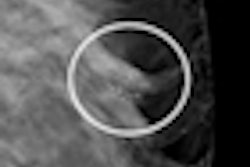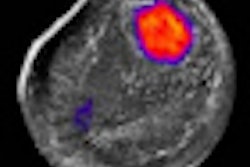Thursday, December 2 | 10:40 a.m.-10:50 a.m. | SSQ01-02 | Arie Crown Theater
Digital breast tomosynthesis (DBT) reduces the problem of tissue superimposition, thus improving both the sensitivity and specificity of mammography in diagnosis and screening, according to researchers from King's College Hospital in London.Asif Iqbal and colleagues will present findings on Thursday from a study they conducted that included 517 women recalled for further assessment following conventional mammography exams.
Each of the women had a bilateral two-view mammography exam -- both digital and film-screen -- as well as a DBT exam; the study used a Selenia Dimensions unit from Hologic (Bedford, MA). Images were taken during the same compression for each view, and six radiologists interpreted the cases randomly assigned in a side-by-side, one-after-another unblinded comparison.
Of the 517 cases, 116 (22.4%) were malignant, and of these 116 malignancies, 88 (75.8%) were invasive and 28 (24.1%) were ductal carcinoma in situ.
Iqbal's team found that the diagnostic accuracy of DBT was better than that of both digital and film-screen mammography. The mean area under the curve for each modality was:
- 0.967 ± 0.007 for DBT
- 0.912 ± 0.015 for digital mammography
- 0.837 ± 0.025 for film-screen mammography
The study also showed that DBT's performance was not affected by breast tissue type: It performed similarly with fatty, dense, or glandular breast tissue. Also, there was no particular difference between digital mammography and DBT in finding microcalcifications.
DBT did prove better at finding soft-tissue lesions than both forms of mammography, Iqbal's team found, concluding that the technology shows promise as a tool in finding these lesions.




















